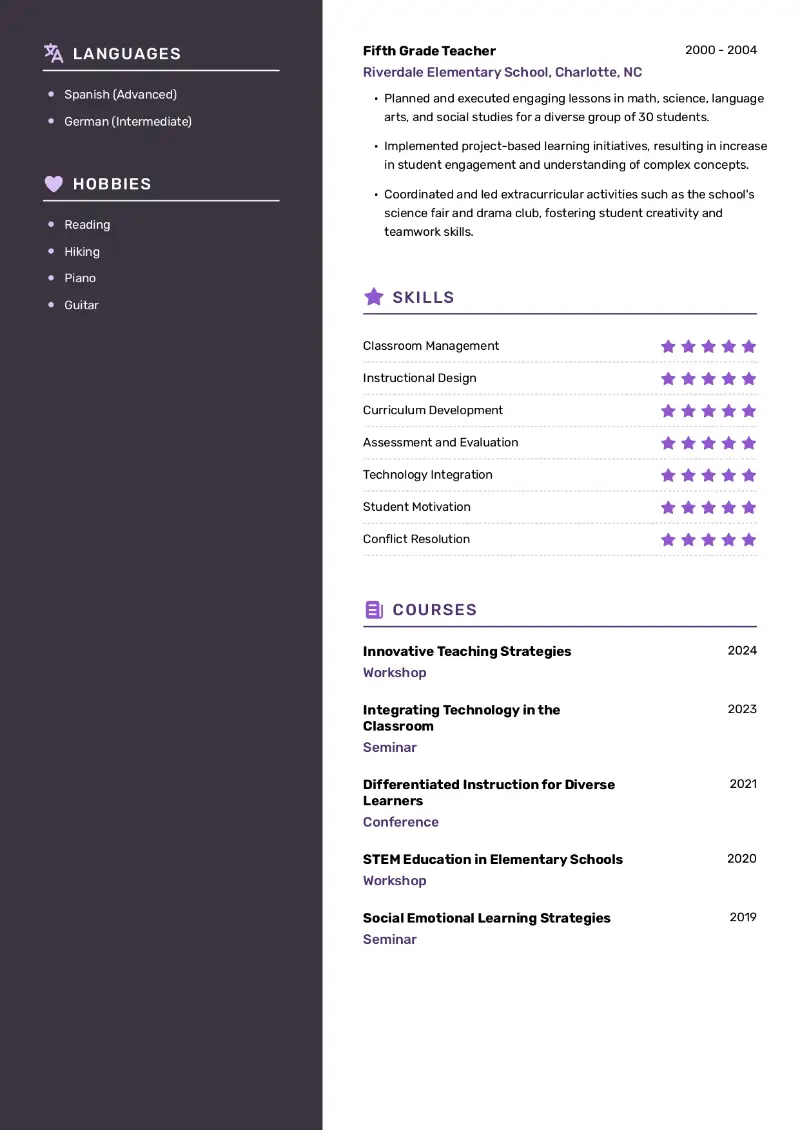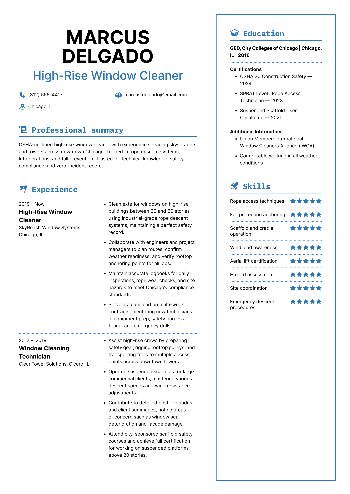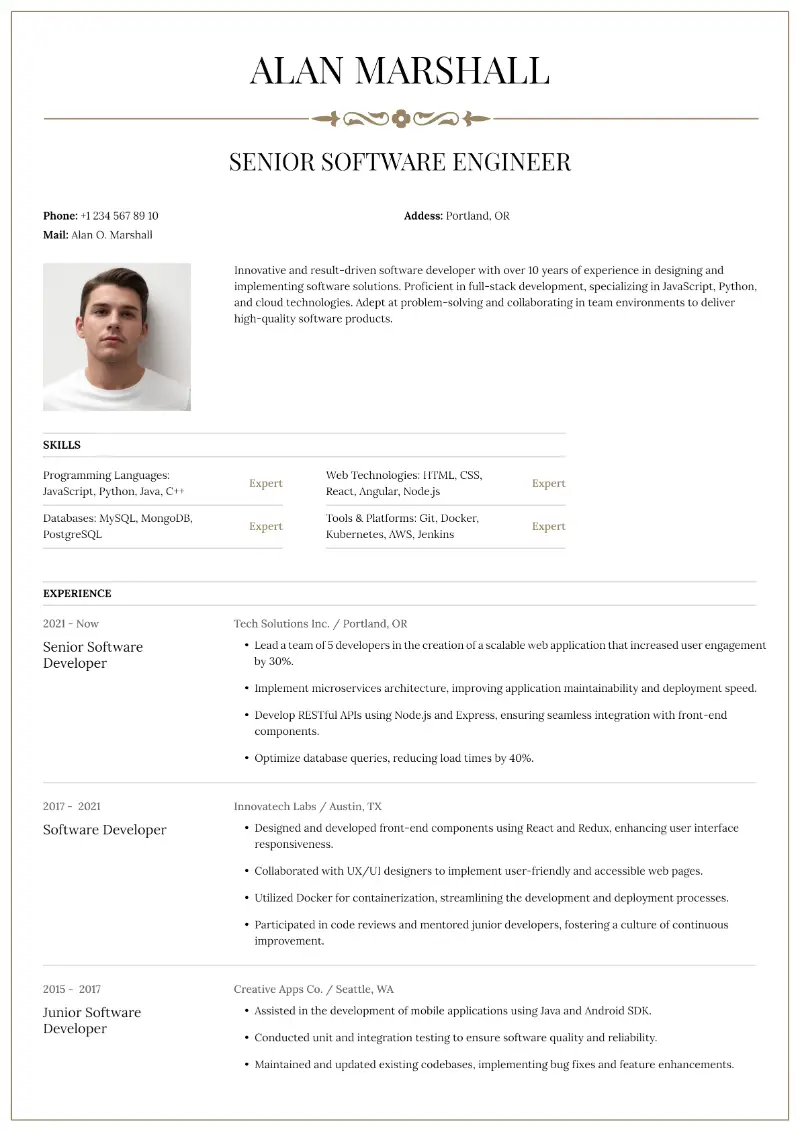Are you wrestling with the dilemma of is it ok to have a 2-page resume? Crafting a compelling application is crucial in today's competitive job market, but the question of resume length often sparks debate.
In this comprehensive guide, we delve into the nuances of the two-page resume format, providing practical examples and expert tips to help you navigate this decision with confidence.
Whether you're a seasoned professional with extensive experience or a recent graduate eager to showcase your skills, read on to discover how to effectively structure and present your qualifications to maximize your chances of landing that dream job.
Should a resume be one or two pages?
When choosing between a one or two-page resume, several key factors should guide your decision-making process.
1. Experience level
Your level of professional background is a critical factor in determining resume length.
- Early Career. For recent graduates or individuals with less than 5-7 years of expertise, a concise one-page resume is often sufficient to showcase relevant skills and academic achievements without overwhelming recruiters.
- Mid-Career. Professionals with 5-10 years of experience may find that a 2-page resume allows them to comprehensively detail their progression, accomplishments, and specific skills acquired over time.
- Senior Level. Executives, senior managers, or industry specialists with history spanning over 10 years typically benefit from a two-page resume to highlight leadership skills and roles, strategic initiatives, and a robust track record.
2. Industry norms
Different professional spheres may have varying expectations regarding resume length based on their specific practices.
One-page resume:
- Creative industries
- Administrative roles
- Customer service
- Banking
- Finance
- Legal
- Government
- Non-profit organizations
- Hospitality
- Retail
- Sales
Two-page resume:
- Engineering
- Scientific research
- Information technology (IT)
- Higher education
- Healthcare administration
- Consulting
- Project management
- Architecture
- Data science
- Law enforcement
3. Job requirements
If the job posting provides a detailed list of specific responsibilities, skills, and qualifications, your resume should directly address these points. This might necessitate a longer document to adequately cover all relevant experiences and skills.
Hiring managers may also suggest additional sections to include, such as publications, memberships, or volunteer work. Incorporating these can add depth to your application but may also increase the overall length.
Is a 2-page resume ok?
A two-page resume can be useful in certain situations, but it also has its drawbacks. Below are some advantages and disadvantages to consider.
Pros:
- Allows you to indicate more comprehensive details about your work experience, skills, and achievements.
- Provides space to showcase a list of skills and accomplishments that might be overlooked in a shorter resume.
- Enables you to tailor the application more specifically to each job posting, matching your expertise with the requirements without omitting relevant details.
- Easier to demonstrate career growth over time, which can be beneficial for senior-level positions like Chief Officer.
- Ideal for attaching publications, projects, or other relevant contributions that add value to your candidacy.
- Helpful for listing certifications, awards, or volunteer roles that support your qualifications.
Cons:
- Can overwhelm hiring managers if not of good resume organization.
- Takes more time for recruiters to review compared to a one-page resume, potentially leading to a quicker dismissal if key information isn’t immediately apparent.
- In situations where papers are printed, a two-page document might be less convenient or more costly.
- Requires careful formatting to ensure readability and coherence across both pages, avoiding awkward breaks or incomplete information on the second page.
- May give the impression of lack of focus if content appears bloated.
Tips for writing a two-page resume
Writing a resume on 2 pages allows you to provide a comprehensive overview of your skills, experience, and qualifications. Below are some tips to effectively structure and populate your document.
Clear structure and formatting
Use clear headings and subheadings to organize information logically (e.g., Summary, Work Experience, Education, Skills).
Ensure consistent formatting throughout (font size, style, spacing, margins).
Professional summary
A concise summary or objective statement at the beginning can grab attention and give a quick overview of your professional background and career goals.
Sample resume objective:
Detail-oriented and passionate Junior Software Developer with a strong foundation in JavaScript, Python, and web development. Seeking a position at a tech-forward company where I can utilize my coding skills and problem-solving abilities to contribute to innovative projects.
Resume summary example:
Compassionate and dedicated Registered Nurse with over 10 years of experience in providing top-notch patient care in fast-paced hospital settings. Expertise in critical care, emergency medicine, and patient advocacy. Strong clinical skills combined with a commitment to delivering evidence-based care.
Formatting
Maintain a consistent and professional layout throughout the resume on two pages:
- Use clean fonts such as Arial, Calibri, Times New Roman, or Helvetica. They are easy to read and widely accepted.
- Make sure the font size is 11 or 12 points for the main text. For titles, you can try a slightly larger size (14-16 points) to distinguish them.
- Italics can be added for subheadings, dates, or to highlight specific achievements or publications.
- Utilize capitalization for section headers to ensure they stand out. Avoid all caps for the main text, as it can be hard to read.
- Left-align all text for a neat look. Center alignment can be employed sparingly, for example, for your name and contact information at the headline for resume.
- Standard margins are 1 inch on all sides. If you need more space, you can reduce them to 0.75 inches, but refrain from going smaller can make 2-page resumes hard to read.
- Apply color sparingly and strategically, if at all. Stick to black or dark gray for text. If using color for headings or borders, choose one that is professional and not too distracting.
- Save and send your resume on two pages as a PDF file to ensure the formatting remains consistent across different devices and software.
- Stay away from buzzwords like “go-getter” or “synergy” unless they’re backed by real, measurable examples.
Resume builder
Employing an online resume builder can help you avoid issues and ensure your application looks polished and professional.
Resume Trick offers a variety of the best resume templates that cater to different industries and job types. All you need to do is choose one and fill in your personal information, ensuring all details are accurate and up-to-date.
Regularly check the preview to see how your 2-page resume looks as you make changes. This helps you spot and correct any issues early.
Create your professional Resume in 10 minutes for FREE
Build My Resume
Proofread
Before finalizing your multiple-page resume, look through it carefully to fix any grammatical errors, typos, or formatting issues. Consider having someone else review it as well for additional feedback.
Use digital tools like grammar and spell checkers to identify errors that might slip through reading.
2-page resume examples
Software engineer resume on two pages
_page-0002.webp)
Elementary teacher sample two-page resume

Create your professional Resume in 10 minutes for FREE
Build My Resume
Tips to make a resume shorter
If you've come to the conclusion that you don't need a two-page resume, here are some recommendations to fit it on one page:
- Prioritize information. Highlight your most relevant experience and skills for the job you're applying for. Tailor each section to emphasize what's most important.
- Use concise language. Be direct and avoid unnecessary details. Use bullet points instead of paragraphs to convey information quickly.
- Cut redundancy. Remove repetitive data or skills that are less relevant to the position. Streamline your descriptions to focus on unique achievements.
- Optimize formatting. Adjust margins, font size (within reason), and spacing to fit everything neatly on one page. Ensure your resume is visually balanced and easy to read.
- Focus on achievements. Highlight accomplishments rather than responsibilities. Quantify results where possible to demonstrate impact.
- Use abbreviations. Employ standard abbreviations to save space (e.g., BA for Bachelor of Arts) but ensure clarity.
FAQ
- What should go on the first page?
- The first page should highlight the most important: contact info, professional summary, core skills, key achievements, and recent work experience.
- Do recruiters actually read the second page?
- If the content is relevant, yes. HRs skim the second page for additional details like accomplishments or expertise.
- Should I include a header on the second page?
- Yes. Add your name and "Page 2" to maintain continuity and avoid confusion.
- Should I print it double-sided?
- No. Always print on separate sheets if submitting a hard copy.
Conclusion
In conclusion, the decision to write a two-page resume depends on various factors, including your level of experience, industry norms, and the specific requirements of the job you're applying for.
While a concise one-page resume is often preferred for entry-level positions, student resume or industries that prioritize brevity, a well-organized 2-page resume can effectively showcase extensive experience, skills, and achievements.
Remember, the goal is not just to fill space but to provide meaningful insights into your qualifications that align with the employer's needs.











